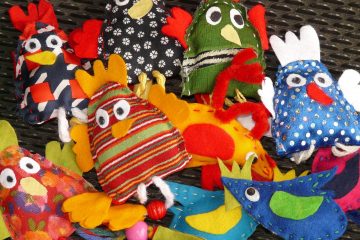 Using authentic materials is an ideological battleground for language teachers. No matter how much people agree that it’s important for all levels, I still seem to hear so much uncertainty as to how to do it, particularly for novices.
Using authentic materials is an ideological battleground for language teachers. No matter how much people agree that it’s important for all levels, I still seem to hear so much uncertainty as to how to do it, particularly for novices.
–But what if they don’t understand? What can they do with it? How can we help them understand? It’s too hard- let’s just stick with Señor Woolly and textbook callouts, ok? That I can do.
Here’s the key: Do you really believe in natural language acquisition? Do you believe that the brain is specially designed to acquire language, and with the right input, it will happen? Then you don’t believe it will happen with fake language. You may use fake language because it’s easy, but you know your students are going to leave your class unable to comprehend authentic materials because you believe language use comes with real language, not fake language.
But what is fake language and what is authentic language? When young children are learning, we don’t feed them fake language. We feed them real language that is leveled. We acknowledge that the evening news is not the best input for the most learning for young children. So we read them Goodnight, Moon. We ask incessant short questions. We give directions one action at a time.
This leads me to believe that the best authentic language for novice students is that which is intended for children. Some of my students who are now in college can still sing “Pin Pon.” There’s my biggest recommendation for teachers looking to use more authentic materials for novice students: use what’s made for kids. Sure, some students will not be terribly enthused by Pocoyó, but it’s amazing what they’ll put up with when you throw a little David Bisbal in the mix.
And then, sometimes you’ll stumble across material that’s not intended for children, but is still beautifully appropriate for novices. Usually this comes in the form of media that specializes in short, punchy, visual impact. Think comic strips, commercials, and, of course, Twitter.
I keep the Mexico trending topics up on my Twitter because they often give me a great opportunity to access high levels of novice-level lanugage. Several days ago the topic was #SituacionIncomodaCuando. What a teenaged gold mine, eh? Mine often ask me how to say “awkward” because it’s such a common teenager response. Take this tweet by El Guasón @SteevenOrozco : #SituacionIncomodaCuando Estás en la casa de un amigo y te invitan a comer y lo que sirven no te gusta.
Look at all that novice language – location, friends, likes. Look at the cognates – situación, invitan, sirven. Look at the novice vocabulary- casa, amigo, te gusta.
Most of all, look at how it’s real – a real live native speaker wrote this. Not fake. Real.
Whether it’s leveled or just pulled off of Twitter, give your students real language. And the next time you work on greetings and farewells, why not try a little Good Night, Moon?
Photo credit: José Alonso
4 Comments
Comments are closed.




I 100% agree! What are some of your favorite authentic resources for elementary? It was always very easy for me to find good ones when I was teaching high school, but now that I’m in elementary I’m stuck (regarding authentic materials that also teach something). Maybe I should just be less stringent in what I want to teach when?
For elementary, my favorite (leveled) resources are songs and books. For songs, I love Calico Spanish’s Mi guitarrí. My students also love kids’ shows and games like Pocoyo (like canción del Pato – they beg for it) or Disney Latino or Nick Jr. Spanish. We love traditional songs like En la granja de mi tío.
For books, I use these titles in my preschool, kindergarten and first grade:
Elmo’s Mi primer busca y encuentra
Azul el sombrero, verde el sombrero
La oruga muy hambrienta
Mamá pata cuenta a sus pequeños
Perro grande, perro pequeño
En mi familia
La araña muy ocupada
Huevos verdes con jamón
Paco y el chile gigante
Hope this helps! Send me an email through the contact form if you’d like to see how these books & songs are part of my quarterly plans for kindergarten and first grade.
Thank you so much for your help!
[…] almost all authentic materials from the beginning. Using authentic materials with novices is both possible and critical. Here’s an example of an activity you could do with novice learners in a unit on […]